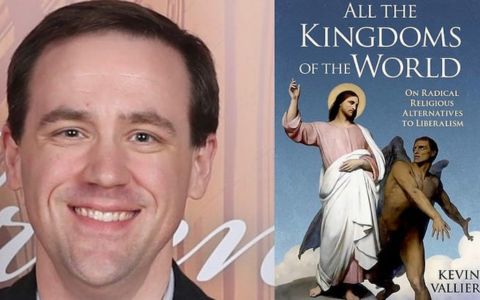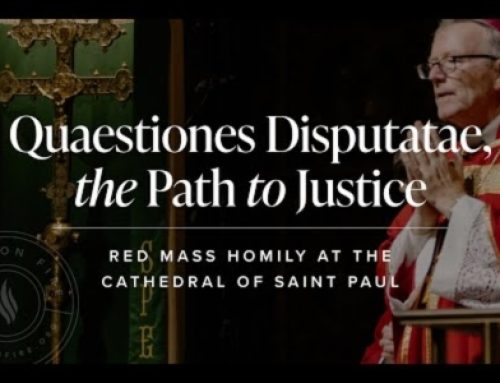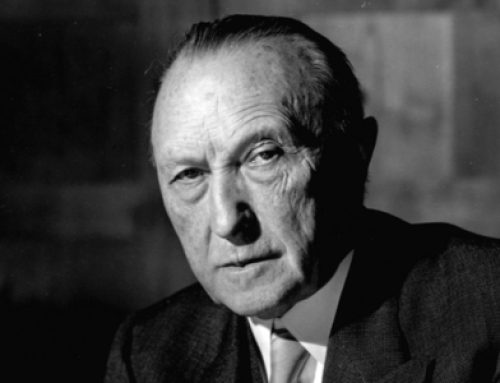Por Samuel Gregg
Fuente: Econlib
A Book Review of All the Kingdoms of the World: On Radical Religious Alternatives to Liberalism, by Kevin Vallier. 1
In All the Kingdoms of the World: On Radical Religious Alternatives to Liberalism (2023), political philosopher Kevin Vallier has provided us with a systematic analysis of a political movement that posits itself as a radical alternative to liberalism. The book’s primary purpose is to help readers understand the nature of integralism in the present and past, and its relationship to liberalism in our time.
By “liberalism,” Vallier does not mean what Americans usually associate with the term: i.e., those who favor widespread intervention in the economy and/or have broadly liberal social views. Rather, liberalism encompasses anyone—whether on the right or left, religious believer, agnostic or atheist—who holds to things like liberal constitutionalism and rule of law.
In this regard, liberalism need not mean the insistence that people’s religious faith may have no role whatsoever in how they behave as citizens in the public square (though some self-described liberals do hold that position). It does imply, however, that 1) religious institutions do not exercise direct or indirect authority in the secular realm by virtue of their ecclesial status and should not seek to do so; and 2) religious authorities should not call on state authorities to address, for example, problems of heresy among adherents of a given faith.
At the heart of integralism is opposition to these two precepts. Though integralists do not agree about everything, they do believe that the Catholic Church and its hierarchy enjoy an indirect authority to compel secular officials towards the realization of specific spiritual goals. This includes the punishment of those who are apostates from the Catholic faith or who have embraced heretical views. Politically and constitutionally speaking, the integralist model is a dyarchy in which church and state rule together in predominately Catholic societies, and in which the claims of canon law and civil law are distinct and yet overlap and reinforce each other.
Vallier himself is not an integralist. Much of the book’s second half focuses on critiquing integralism’s theoretical premises and practical implications. Vallier does, however, want to explain what he considers to be integralism’s internal coherence. In doing so, he establishes himself as the preeminent scholar of integralism writing from “outside” this political and religious tradition.
One reason for this is Vallier’s willingness to invest time in actually reading what integralists say and write. He doesn’t, for example, dismiss them with tired bromides like “you can’t legislate morality,” which deny the obvious fact that even the most seemingly innocuous of laws have some type of a moral grounding and structure built into them.
For Vallier, integralism cannot be dismissed as the frantic cogitations of a tiny group of eccentric intellectuals aghast at the relativism that plagues modern Western societies or the disarray into which many Christian confessions are mired. Integralism, Vallier illustrates, has a clear and developed structure of ideas about the relationship of religious faith and the ecclesial realm to the political and legal order, and vice versa. Moreover, Vallier points out that there were periods of history—most notably, Medieval Christendom—in which “High Integralism” was the dominant political system, even if the phrase was not used at the time.
Vallier goes to some lengths to illustrate that contemporary integralism is not a monolithic phenomenon. Among its ranks are numbered thinkers like the distinguished British philosopher and historian Thomas Pink. He has focused explicitly on intra-Catholic arguments about the meaning of Vatican II’s 1965 Declaration on Religious Freedom Dignitatis Humanae: On the Right of the Person and of Communities to Social and Civil Freedom in Matters Religious2 (to give the declaration its full title) and what it means for the Church’s relationship to the secular political order.
Pink has shown no particular interest in pushing specific political and economic programs like the corporatism typically favored by integralists. His primary concern is ad-intra (to use a Latin phrase used during discussions at Vatican II): that is, his attention is overwhelmingly upon the Church’s self-understanding and then what that means for the Church’s relationship with the state.
By contrast, the priority of integralists like the Harvard professor of constitutional law Adrian Vermeule is ad-extra. Such integralists are often cagey, Vallier observes, about the precise theological-political roots of their agenda. They are not, however, shy about working towards the realization of very specific political, constitutional, legal, and economic programs in the world outside the Church in ways that go far beyond anything proposed by Pink. These invariably involve rigorous use of state bureaucracies like the administrative state to reshape society in non-liberal directions.
These arrangements and goals—such as those associated with the corporate state—are largely antithetical to those which characterize the United States Constitution. If the changes desired by integralists were to be realized democratically, it would require 1) the mass conversion of a majority of Americans to Catholicism 2) plus the conscious decision of these Catholics to embrace integralism, and then 3) overcoming the presumed opposition of millions of non-Catholic Americans to integralism.
The sheer unlikeliness of this progression makes an alternative approach more probable: that is, integralists doing what progressives have been doing since the 1900s—working to subvert the Constitution via creative reinterpretation of the Constitution and building bureaucracies that gradually neutralize the influence of political institutions identified in the Constitution. The parallels between progressives and integralists cannot be understated.
Much of Vallier’s explorations of these two faces of integralism involve him systematically defining the key aspects of integralist thought and showing how the different parts fit together. In several places, this takes the form of the type of models beloved of many political scientists—the utility of which, I will confess, I remain skeptical of.
In the case of contemporary ad-extra integralists, Vallier’s analysis involves sifting out the implications of various writings and commentaries mostly penned by Vermeule. He shows how these add up to a theory and praxis for state capture. Given that Vermeule goes a long way to cover his tracks to all but the few who understand the full meaning that he invests in expressions like the common good, Vallier makes crystal clear what this leading integralist has in mind for America.
Here it is important to note that Vallier demonstrates the degree to which ad-extra integralists draw upon the thought of Carl Schmitt and his precise approach to the theological-political problem. Schmitt is famous for his overt political authoritarianism, his view of all secular political philosophies as covert theologies, and his famous friends-enemies distinction as critical to grasping the essence of modern politics. The extent to which some integralists rely upon Schmittian premises illustrates just how antagonistic ad-extra integralism is to both institutional liberal arrangements and liberalism per se.
Exploring the implications of ad-extra integralism for politics takes Vallier into discussions of the integralists’ significance for contemporary American political debates. That integralists are intent upon a radical reshaping of American conservative politics is no secret. Despite the relatively small number of integralist intellectuals, integralist ideas and language have worked their way into the rhetoric and stated priorities of parts of the New Right.
But Vallier also demonstrates that realizing integralism in the conditions of a country like America would not only be mathematically challenging (even among run-of-the-mill orthodox Catholics like myself, integralists constitute a telephone-box minority). More significantly, Vallier argues, such a transition would involve grave and intentional damage to the common good that integralists claim to be trying to realize. In light of Catholicism’s famous insistence that there is never a good reason to do evil, ad-extra integralists could well find themselves violating their church’s own moral teaching.
To my mind, however, the deeper significance of Vallier’s book is its analysis of the history and development of Catholicism’s approach to the temporal realm. The importance of this discussion goes far beyond the specifics of Catholicism insofar as it also touches upon the wider question of religion’s relationship to liberal order.
The idea held by many people today that religion is a strictly private affair is, Vallier points out to his readers, “peculiar” (p.1). For one thing, this idea has not been the norm in history. Second, human beings seem to be inherently religious creatures.
At some point of their life, every person wonders 1) if there is a God; 2), if yes, then how we know this Being; 3) what this Being has revealed about himself; and 4) the significance of this revelation for our private and public actions. At a minimum this indicates that trying to push religion and religious believers out of the public square is a sure-fire recipe for the very type of internal social and political conflict that liberalism ostensibly seeks to moderate.
These facts make integralism seem far less strange than we often suppose it to be. It does, after all, provide clear answers to the question of how the spiritual realm relates to the temporal realm. That particular question emerges directly from the radical step that Christianity took in making a distinction between the spiritual and the temporal that was incomprehensible to pagan Greek and Roman minds that invested the polis with divine qualities. The pagan position achieved a type of apotheosis with the ascription of divine-like qualities to the Roman Emperor.
Distinction and separation, however, are not the same thing. Moreover, how the Church works through the implications of this distinction occurs within human history and that process is thus subject to the vicissitudes of historical change. Absent, for example, the Roman Empire’s gradual implosion in fifth century Western and Southern Europe and the need for some type of authority to fill the gap, would Catholic bishops have found themselves having to take on essentially temporal political functions?
And yet the Church is clear that historical change cannot somehow displace revealed truth: most especially, truths about the Church itself. That raises the question of whether integralism is in fact much more than a reflection of historical conditions that are no longer in play. Put another way, is true Catholic doctrine on the relationship between the spiritual and the temporal essentially integralist?
Vallier’s broad conclusion is that this seems to be the case. He is more convinced by the argument of integralists like Pink that Dignitatis Humanae represents a change in church policy towards the state, than those who maintain that Dignitatis Humanae is what is known as a “development in doctrine.” Among other things, development means “change” and “growth” in a doctrine that does not involve contradiction of previous teaching. The most well-known modern expostulator of this idea was John Henry Newman in his An Essay on the Development of Christian Doctrine, written before Newman converted to Catholicism in 1845.3
This is surely where the discussion about integralism needs to go. There is not presently, Vallier notes, a single Catholic bishop in the world in full communion with Rome who embraces (at least openly) integralism in any form. But if Dignitatis Humanae is what Pink suggests it is, then a policy switch back towards a more explicitly integralist position on the part of the Catholic Church sometime in the future is at least conceivable.
In this sense, Pink’s challenge to the widely accepted understanding of Dignitatis Humanae is ultimately more important than the agenda being pursued by the ad-extra integralists. For if Pink is right, then those integralists whose focus is ad-extra will be able to insist that they are working on the basis of solid doctrinal foundations.
By contrast, if Pink is mistaken, and Dignitatis Humanae does constitute a legitimate development of doctrine in the way that it grounds the right of religious liberty of individuals and communities squarely upon 1) natural law and 2) a return to older Catholic sources on the topic (such as several Church Fathers), then integralists have a problem. For if the interpretations of Dignitatis Humanae offered by figures like Joseph Ratzinger, John Finnis, Martin Rhonheimer, and, further back, by the Swiss theologian and Cardinal Charles Journet (a far more important figure in Vatican II’s debates about Dignitatis Humanae than John Courtney Murray, S.J.) are right, the ad-extra integralists’ theological-political principles and agenda are in deep tension with Catholic doctrine.
Quite where all this will end is unknown. It is tempting to review integralism and ad-intra and ad-extra integralists as a passing reaction to arguments going on inside the American conservative movement and the Catholic Church, as well as frustration with the state of the West.
For more on these topics, see
- “The Revanchist Right,” by Arnold Kling. Econlib, Sep. 4, 2023.
- Political Catholicism Reborn? Symposium on Kevin Vallier’s All The Kingdoms of the World. Law and Liberty, Sep. 21, 2023.
 Anthony Gill on Religion. EconTalk.
Anthony Gill on Religion. EconTalk.
Yet as some integralists have correctly observed, major changes in the political, social, and economic order have often come about because of the work of a small cadre of dedicated intellectuals and activists. Early twentieth century progressives or Lenin’s Bolsheviks come to mind as prominent examples. Thanks to Kevin Vallier, however, we have a comprehensive outline of the ideas and agenda that motivate those integralists who have chosen to act in an analogous manner. As the saying goes, forewarned is forearmed.
Footnotes
[1] All the Kingdoms of the World: On Radical Religious Alternatives to Liberalism, by Kevin Vallier.
[2] Available from the Vatican archive online at “Declaration on Religious Freedom: Dignitatis Humanae: On the Right of the Person and of Communities to Social and Civil Freedom in Matters Religious”.
[3] Available online at “An Essay on the Development of Christian Doctrine,” by John Henry Newman. NewmanReader.org.
* Samuel Gregg is Distinguished Fellow in Political Economy and Senior Research Faculty at the American Institute for Economic Research. He has written and spoken extensively on questions of political economy, economic history, monetary theory and policy, and natural law theory. He is the author of sixteen books, including On Ordered Liberty (2003), The Commercial Society (2007), Wilhelm Röpke’s Political Economy (2010); Becoming Europe (2013); Reason, Faith, and the Struggle for Western Civilization (2019); The Essential Natural Law (2021); and The Next American Economy: Nation, State and Markets in an Uncertain World (2022).






Deja tu comentario